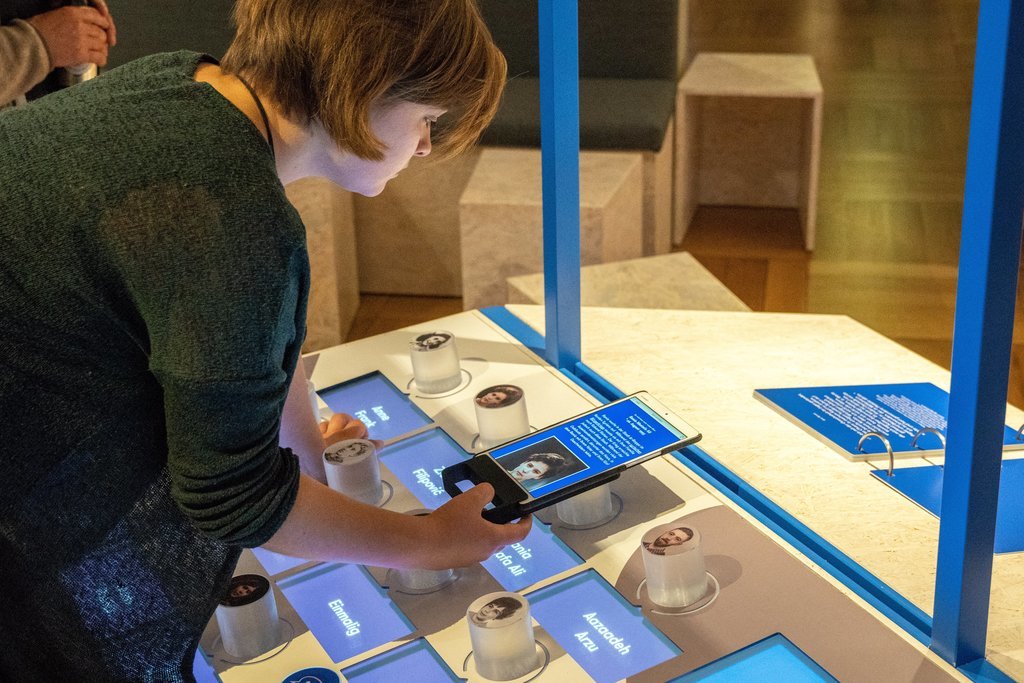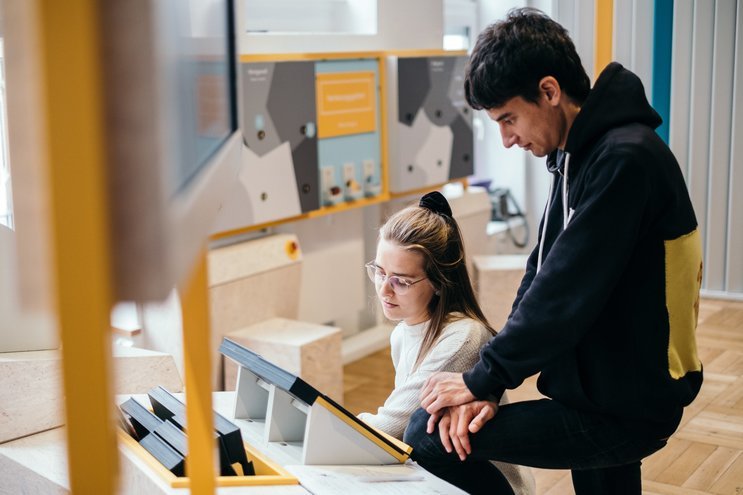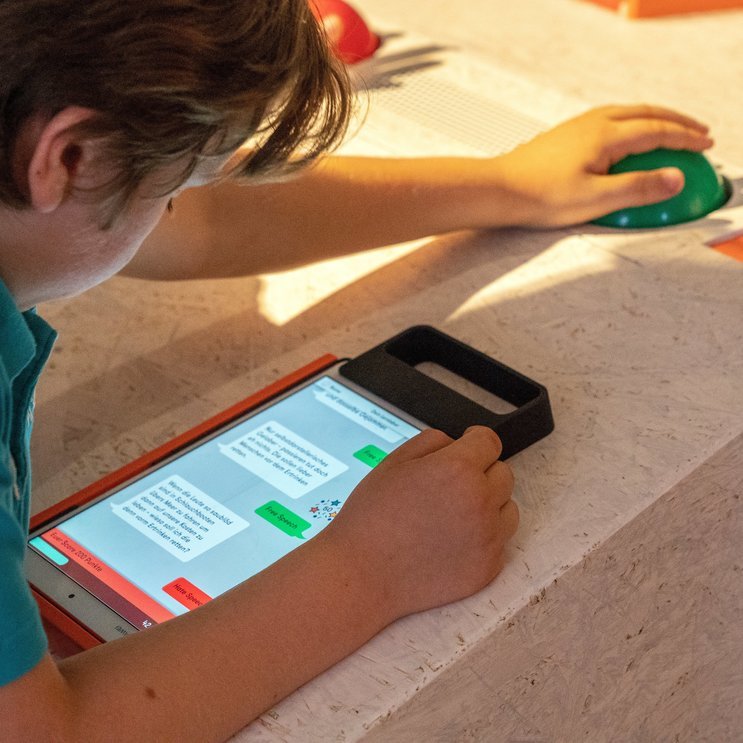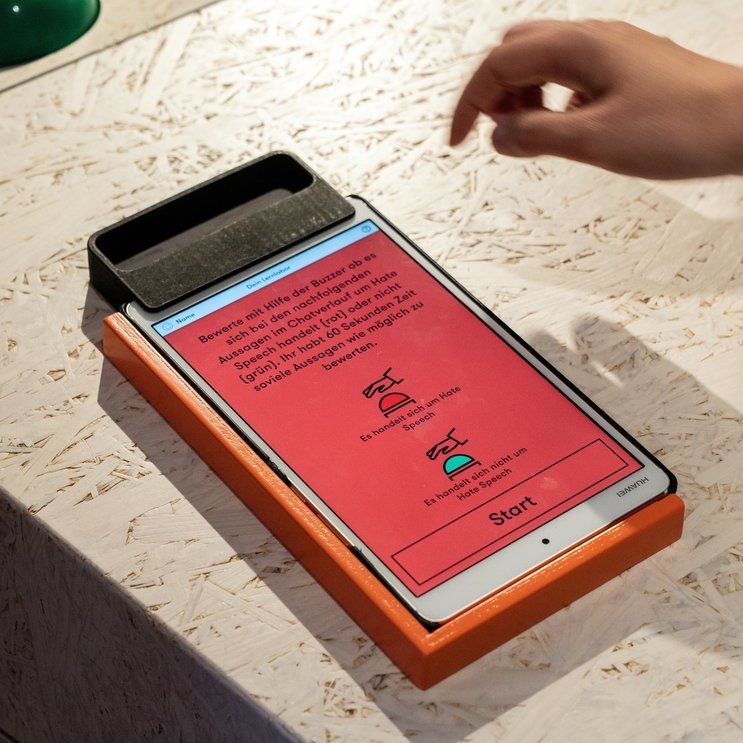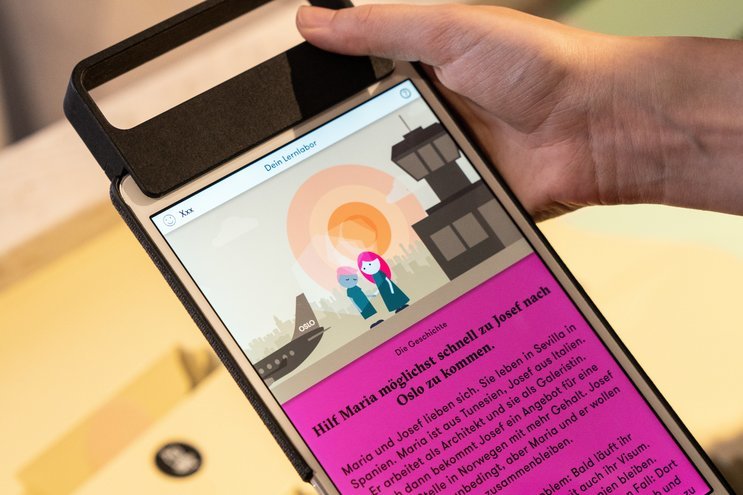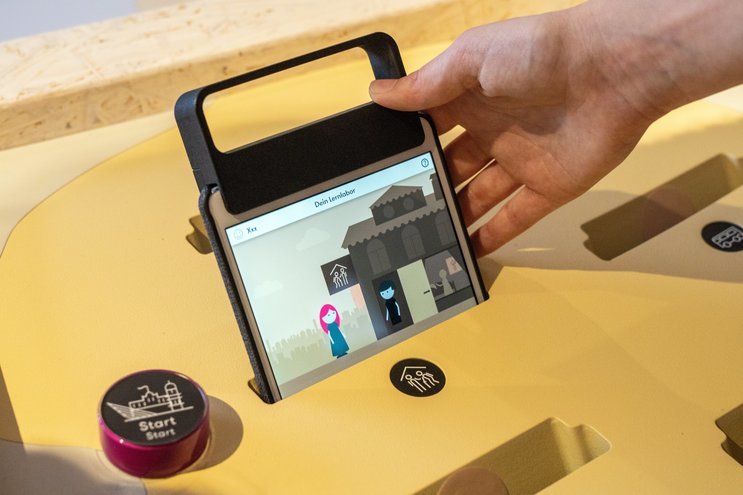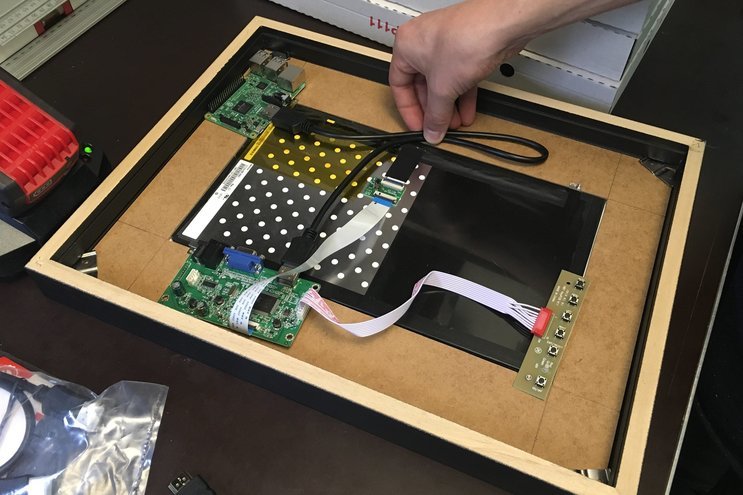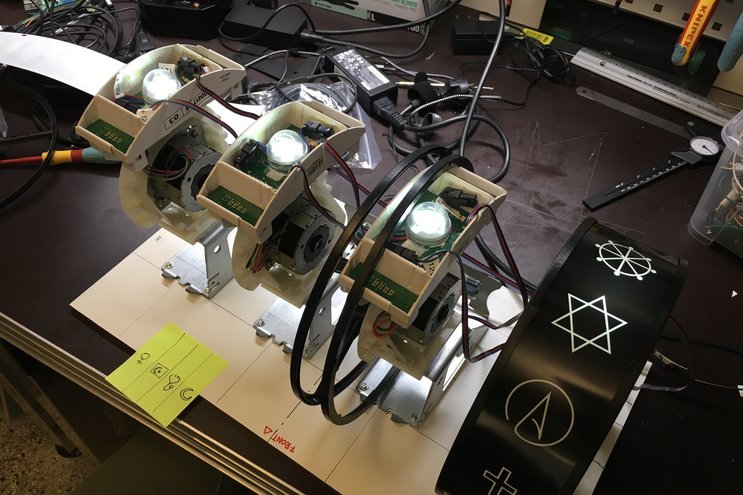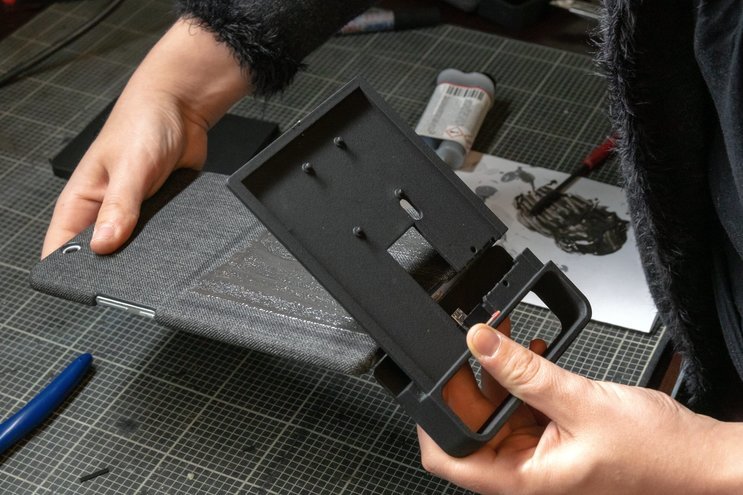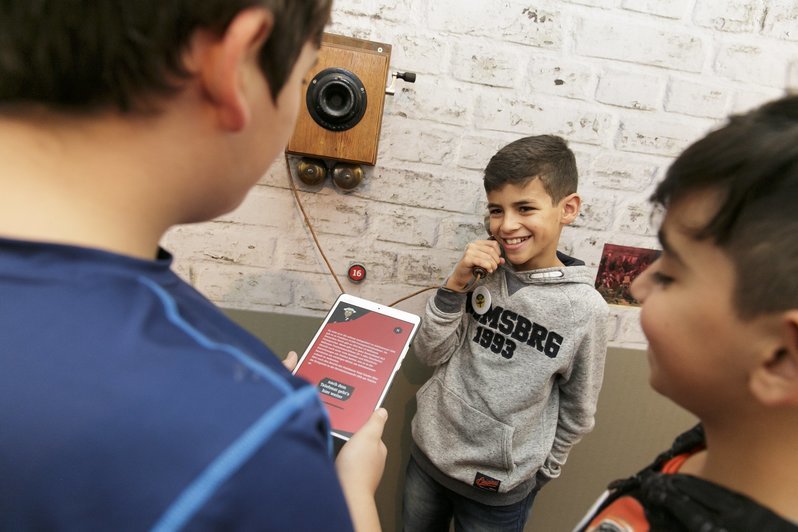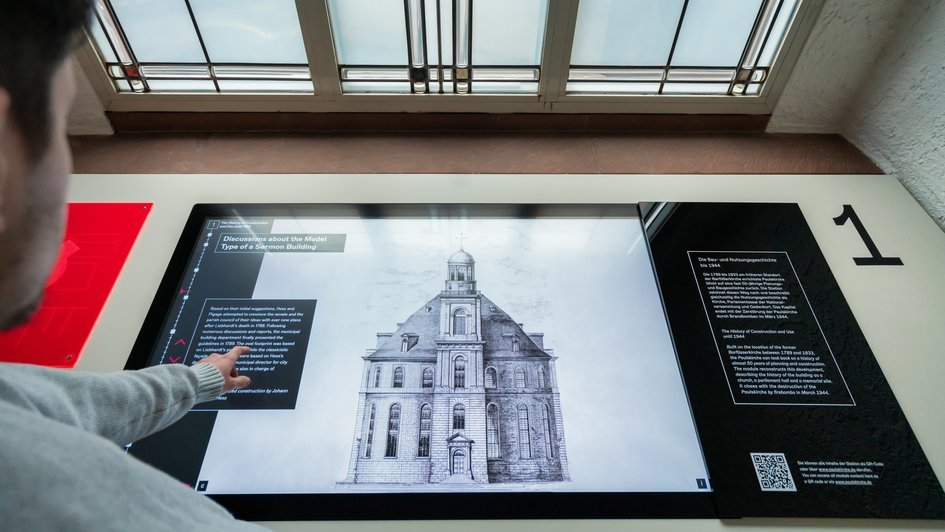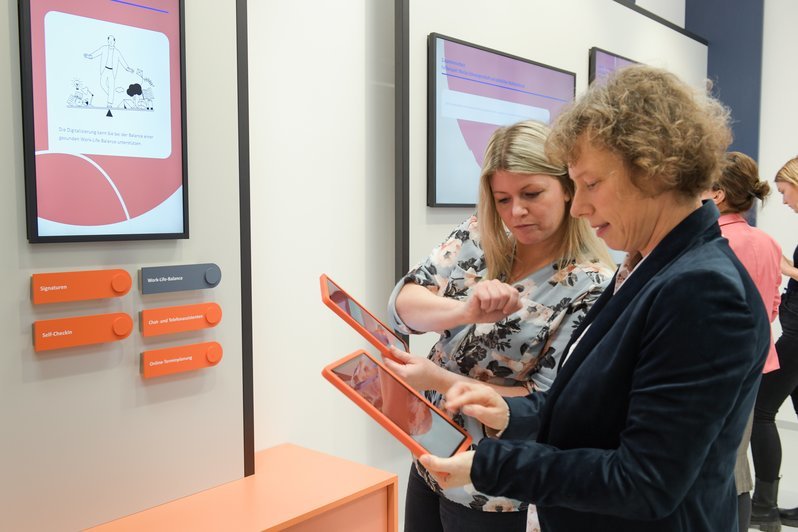We worked for Frankfurt-based education center Bildungsstätte Anne Frank to create and develop a participatory media system for their permanent exhibition “Anne Frank. Morgen mehr”. The goal was to engage young visitors and inform them about Anne Frank’s life as well as her relevance today. We developed 18 bespoke interactive stations which visitors can explore with tablets to reflect on topics of diversity, tolerance, and justice.
Educational Concept
“Your Opinion Counts!”
Anne Frank’s diary is one of the most important and well-known documents on the crimes committed against the Jewish population during the Holocaust. The Bildungsstätte Anne Frank, located in her birthplace Frankfurt, has set itself the task to pass on her story and draw connections into the present, where racism, injustice, exclusion, and prejudices are still common problems.
For the redesign of the permanent exhibition “Anne Frank. Morgen mehr.” (Anne Frank. Tomorrow more.), we joined the creative process at an early stage, working in close collaboration with the curatorial team, the graphic studio Pixelgarten, the architects from Exposition, and the designer Katja Kirchhoff. We developed the media strategy, were responsible for all digital content, carried out the design and manufacturing of devices, interfaces, and hardware, and set up a software framework for content management.

“Anne Frank. Morgen mehr.” is designed as an interactive Learning Lab aimed primarily at groups of young visitors and school classes, but is also open to the general public. Unlike traditional exhibitions, it relies on active participation, exchange, and independent exploration. The aim is to pose questions instead of presenting universal answers, to encourage critical thinking and empathy. This is achieved by delivering tangible examples, illustrating knowledge, and sometimes adding a provocative touch. Supported by trained guides, the visitors are encouraged to draw their own conclusions and form a reflected opinion. Furthermore, all visitors are invited to digitally document their discoveries on the topics treated, in order to create a basis for a final group discussion.
Conceptually, the exhibition begins with the biography and persona of Anne Frank before connecting to the present day. All items are covered in 18 bespoke media stations and analogue hands-on activities highlighting different aspects of exclusion and injustice. With various didactic approaches, interaction concepts, and forms of presentation, they make up a diverse topical playground.
Versatile Learning Tool
Digital Media On The Move
First and foremost, we developed a consistent media strategy and were responsible for the implementation of all digital elements. Based on the educational goal of each station, we also translated the contents into digital narratives presented in various media formats, ranging from games to animation to short clips. Thanks to the close collaboration with the exhibition curators, our solutions perfectly merged with the objects designed by Exposition and the graphics by Pixelgarten.

Personalized tablets are the central element of the exhibition’s interaction concept. They connect physical objects and exhibits with digital content, opening up a whole new scope of media formats. In addition, they provide orientation within the exhibition space, enable interaction, and serve as a user manual for games and other hands-on activities.
The tablets also serve as a tool for connecting people in a shared experience and minimize isolated exploration by integrating elements that demand communication or cooperation between two or more visitors.
The Living Book introduces the protagonists of Anne Frank’s diary. For this exhibit we augmented the physical object of a book into an animated information medium by projecting digital imagery onto the surface. Visitors can navigate through the chapters by touch or simply turning the pages. Hand-drawn portraits add a unique aesthetic to the graphic concept. Furthermore, we integrated audio files to tell the stories.
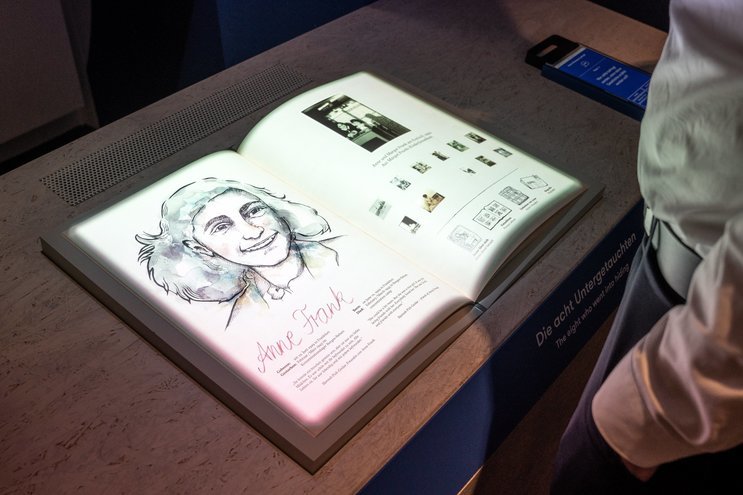
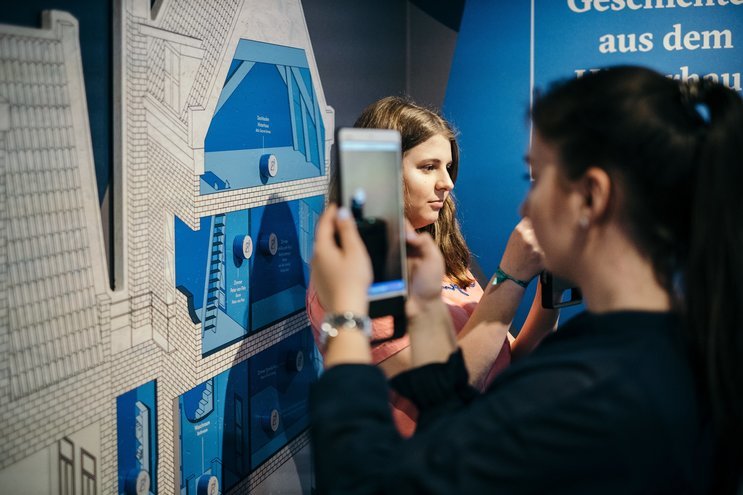
The Frank family lived in their hideout at Prinsengracht 263 in Amsterdam together with Fritz Pfeffer and the van Pels family for over two years, before they were betrayed and arrested. For the Virtual Annex, we brought a large 2D model of their secret hideaway to life by digitally integrating an all-round view into the individual rooms and information their residents.
Until as late as 1994, homosexual actions between men were punishable in Germany, regulated by the criminal code’s infamous paragraph 175. Over decades, men had to hide their sexual orientation or risk facing charges.
This suppression is illustrated by short movies. Six fictional couples, each set in a different decade, share their stories, their hopes and fears, and their experiences with the authorities. The movies of this collaborative exhibit are activated by sliding two tablets into a physical backdrop. We developed the narrative concept, co-wrote the scripts, selected the actors, directed, and produced the footage. Intro and end clips as well as chapter sequences, for which we developed a consistent concept, were contributed by Anqer.
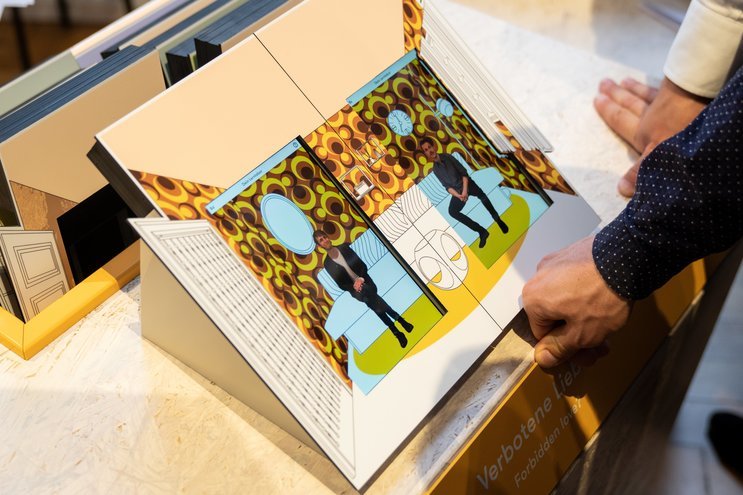
Hate speech is a common problem in digital communication and social media. But where do you draw the line between a joke, an inappropriate comment, and actual hate speech? This interactive station lets up to four visitors evaluate chat protocols and distinguish offensive from discriminatory actions.

When putting on the Racist Glasses, illustrations of perfectly normal individuals turn into shady clichés. This shows the mismatch between an actual person and stereotypical preconceptions – one of the reasons why many people are still confronted with prejudice in their daily lives. With custom-built hardware and specially designed glasses, we translated this phenomenon into a relatable experience.
The station Mary and Joseph highlights the challenges faced by people who live in Europe without valid identification documents. The visitor follows a young woman living illegally in Spain on her journey to Oslo to reunite with her boyfriend. The experience turns into an odyssey as she encounters problems with work permission, transportation, border controls or healthcare due to her missing documents.
With a realistic storyline illustrated by bespoke animations, we turned the topic of illegal migration and exclusion into an adventure game that lets visitors see the world through the eyes of those affected.
As visitors constantly have the chance to evaluate situations and statements, choose a side on a controversial subject matter or record their personal view, the tablets become a document of opinion along the course of the exhibition. This creates a perfect basis for a concluding group discussion led by one of the trainers. The young visitors can now gather around a large screen, share what they have learned, and apply their newly gained insights to real-life experiences.
Product design and Code
Bespoke Solutions On All Levels
For the exhibition, we managed to create diverse experiences with cost-efficient means by carefully choosing simple technical solutions and combining them with bespoke elements. In creating additional special exhibits for the individual media stations, we could make use of our expertise in product design and manufacturing.
The central interaction tools are made up of affordable tablets and standard cases. To tailor them exactly to the specific requirements, we equipped them with 3D printed hardware elements containing custom manufactured sensor technology.
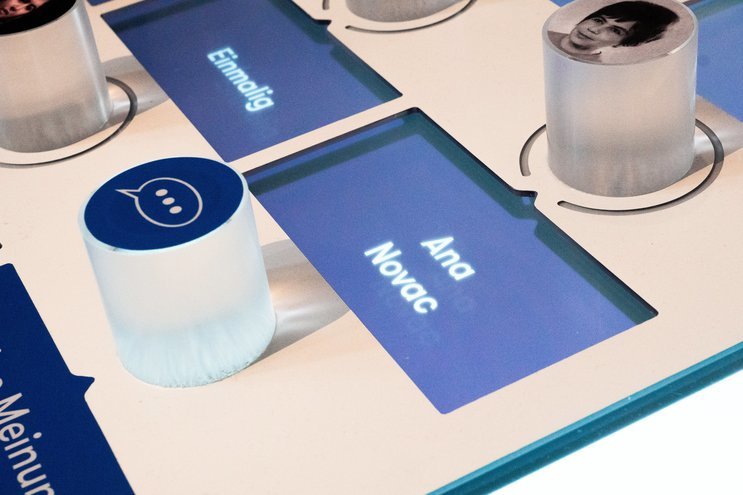
NFC tags are integrated into elements clearly indicating interactive media content. Once the tablet is held against them, the display of related content is triggered on the screen.
All digital media is controlled by a central Content Management System we developed exclusively for this use case. It gives the staff of Bildungsstätte Anne Frank the freedom to edit or expand content and gain insights into visitor interaction.
Related Projects

Curious about our approach? Feel free to get in touch!
Max Wolf Partner +49 69 24 000 322 max.wolf@meso.design max.wolf@meso.design +49 69 24 000 322
MESO Digital Interiors GmbH
Gutleutstr. 96 . 60329 Frankfurt . Germany
Team
Alex Leask, Klaus Texter, Fabio Thiel, Timon Skerutsch, Anna Rack, Constantin Urban, Anton Viehl, Marc Zeman, Olga Zimmermann, Alec Woodward Mitchel, Daniel Henning, Johannes Busch, Daniel Neumayr, Alexander Teczar, Nina Dauer, Sarah Schmid
